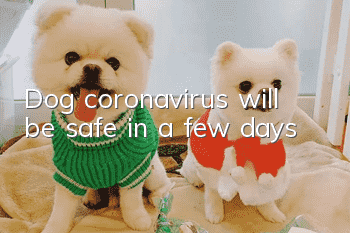How to care for young Tibetan Mastiffs?

The daily care of young Tibetan Mastiffs starts when the puppies are born, such as wiping the newborn puppies, tying the navel, fixing the nipples, keeping warm and anti-freezing, supplementing milk, feeding, timely vaccination, and so on. These measures are very important to ensure the survival rate of new Tibetan Mastiff puppies. But in order to establish a strong constitution for all-round development, Tibetan Mastiff also attaches great importance to intensive care and care of the female dog, because the physical condition and health of the female dog and the health of the newborn puppies are staked.
(1) More sun exposure and rapid growth are important biological characteristics of the new puppies to maintain the growth and strength of the female Tibetan Mastiff. At this time, in addition to the nutrition and physical condition of the female dog, ensure that the mother dog has enough breast milk. , but a meaningful measure, allowing the puppies to have sufficient sunlight will help the puppies' bodies synthesize vitamin D to promote bone development. For this reason, 3 to 5 days after the puppies are born, when the weather is warm and daylight saving time, the Tibetan Mastiff production roof The nest or nest door is opened to allow the puppies to get more sun. This can last 2 to 3 hours a day. The kennel, powered by the sun's light, is also conducive to sterilization, keeping it dry, warm and conducive to health, ensuring a clean and safe living environment for puppies.
(b) Regular cleaning. Although the mother dog licks the feces of the puppies after breastfeeding and licks the dirt of the puppies all over the body, it still needs to be cleaned regularly to keep the dog's body clean and the puppies' body. Wiping the skin can also help promote the blood circulation of puppies and promote the activity of digestive organs. The puppies should be wiped next to the mother dog and not away from the mother dog. Choose sunny weather and make a nest in the middle. Prepare a basin of warm water that can be disinfected (preferably a children's disinfectant or Lysol potassium permanganate), produce the first circle of the floor and walls and splash it again to make the middle circle smell the same, and then put a towel with disinfectant ( The water temperature is about 25 ℃) after soaking, just wipe the puppies. Wipe from front to back, top to bottom, along the hair to the back, in order first. After cleaning and drying, immediately dry the body of the puppy with a dry towel and return it to the nest. The operation should be gentle and can be carried out by 2 people. Do not wipe the bitch, the bitch can be allowed to wipe and lick the pups, do not trust the bitch, pups, to prevent accidents.
(c) Keeping the production cycle and the birth nest dry and hygienic is also an important part of the care of the Aberdeen Tibetan Mastiff. Especially in spring, due to cold, snow and cold, wet production cycles, the health and safety of new puppies is extremely detrimental to the production of bird's nests. In addition to daily cleaning and nest disinfection products during normal production cycles, bedding products within the nest should be frequently replaced. When the puppies are born, the wet bedding is taken out of the nest, and the middle nest is dry and covered with new bedding. After drying and disinfecting new bedding, and after using medicine. In early spring, since canine parvovirus, canine distemper and other infectious diseases are more common in the middle cranial fossa, every dirty bedding can be removed and the nest produced by burning it with fire can be very effective in removing various pathogenic microorganisms. Dirt removed from the kennel must be disposed of safely.
(4) Deworming, sucking, licking, chewing various objects to give birth to offspring, it will eat a lot of parasitesOnce insect eggs, especially roundworm and tapeworm eggs, are ingested by mistake, the puppies will be infected with parasites. If it is not insects, it will seriously affect the growth and development of the puppies. The puppies show symptoms such as loss of appetite, lethargy, rough coat, loose stools and other symptoms. If the puppies are not dewormed in time, the puppies may be malnourished or have a delicate constitution, resulting in secondary infection and death. Be careful, usually a Tibetan Mastiff 25 days after birth, a stool examination. If you find eggs, larvae or worm flakes, depending on the species of parasite, you should promptly treat the symptoms and dose pesticides.
(5) After 2 months of age after vaccination, the antibodies obtained from breast milk have been gradually exhausted by the puppy, and the puppy’s autoimmune resistance to disease has not yet developed, so at 2-1 month, the old puppy , are very susceptible to various diseases. Especially in spring, canine parvovirus enteritis, canine distemper, canine parainfluenza and other fatal infectious diseases are prevalent across the country, which are fatal to puppies. Therefore, a combination of climate, environment and disease characteristics in popular locations at the time of puppy vaccination is very important. According to reports, the current highest vaccine prevention rate in China is only 46% effective. A canine group that does not fully master a rigorous vaccination schedule or even describe it will be unable to identify infectious diseases. Especially for 2-month-old puppies, strict vaccination, disinfection and disease prevention, medical treatment, while strengthening management and improving physical fitness of puppies are still important measures to increase the survival rate of puppies.
- What causes a dog’s runny nose?
- Why do dogs keep losing hair?
- How to prevent kennel cough in golden retrievers in winter?
- How old does a dog start to lose teeth? Things to note when dogs start losing teeth.
- How long does it take for a female dog to recover from neutering?
- How to train a Labrador’s sense of smell? You won’t regret it after reading these steps!
- What will happen if your dog’s feet are not dried after bathing?
- Why do dogs produce smelly secretions in the late menstrual period?
- Can dogs be bathed in cold water?
- Can dogs eat ginger?



